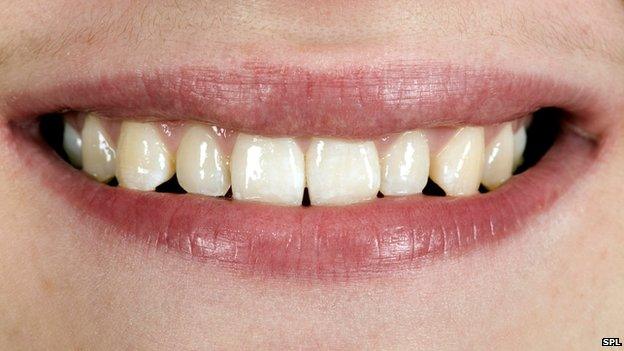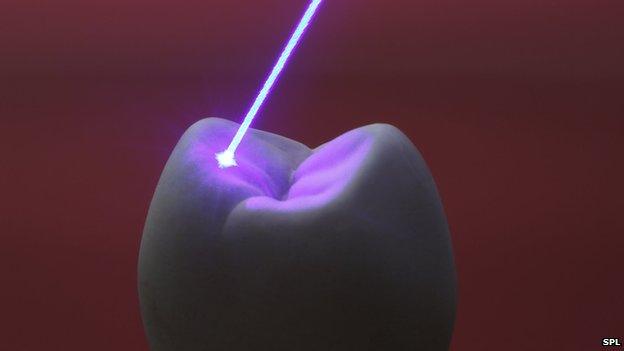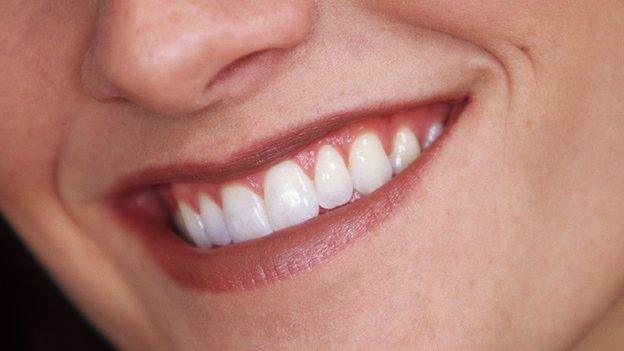Lasers 'could prevent' need for root canal treatment
- Published

Lasers have been used to regenerate parts of damaged teeth and could one day be used to prevent root canal treatments, claim US researchers.
The laser beam triggered a series of changes that led to the formation of new dentin, the layer below the enamel, in animal tests.
The results, in Science Translational Medicine, external, showed stem cells in the dental pulp were activated.
Experts said it was intriguing, but a long way from the dentist's chair.
The team at Harvard University used a drill to remove part of a tooth in mice and rats.
Professor Chris Mason, UCL: Lasers "trick" teeth into regenerating
One dose of laser therapy on the damaged tooth led to the production of a partial layer of dentin 12 weeks later.
New tissue
It was not a perfect match for natural dentin, but the researchers argue it would be easier to achieve with human teeth, which would be larger, and by refining the laser.
The scientists could not produce a new layer of the hard enamel that protects the tooth from wear and tear.
However, Dr Praveen Arany said his research could have a role in preventing root canal treatment - the dreaded and painful procedure involving the removal of a tooth's nerve and blood vessels.
Dental cement is currently used to trigger new dentin formation, but it is not always successful.
Dr Arany told the BBC that lasers may be a better option: "The laser tool and the mechanism we have outlined would ideally be used in pulp capping that would prevent root canal treatment and hopefully preserve the tooth without the need for it to be eventually extracted.
"But once you reach the pulp and the pulp is necrotic, the cells you have to work with are no longer there so this would not work in those cases."

Prof Ian Needleman, the director of the International Centre for Evidence-Based Oral Health at University College London, said full tooth repair was still a distant prospect.
"What wouldn't come out of this is that a whole tooth could be regenerated. One tooth tissue could show some signs of regeneration or repair, but that's a million miles from regenerating a tooth.
"It is interesting as a model of whether laser light can play a part in regenerative medicine, but in terms of dentistry it's not offering an innovation at the moment."
Stem cells
The source of the new dentin was traced back to stem cells in the dental pulp.
Experiments showed energy from the laser light was creating highly reactive oxygen inside the dental tissues.
It in turn activated growth chemicals that stimulated the stem cells to produce a new layer of dentin.
Chris Mason, a professor of regenerative medicine at UCL, said: "I was intrigued that shining a little bit of light triggered stem cells to differentiate.
"It's incredibly low-cost and would be patient-friendly so it seems to have a lot going for it, but they can't grow the enamel.
"The tooth is like a house, the dentin is the inner walls, but it still needs a roof and outside walls."
- Published5 April 2014

- Published9 March 2013

- Published28 May 2014
